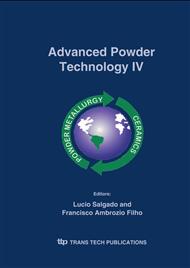p.179
p.186
p.192
p.198
p.205
p.211
p.217
p.225
p.231
The Development of an Innovative P/M Oil Control Ring from Concept to Production Line
Abstract:
The two major working characteristics of the oil control ring are: 1) to scrape the lubricant oil from the cylinder wall to the direction of the crankcase, and 2) to maintain a sufficient amount of lubricant oil to the compression rings above it in order to sustain a suitable lubricant film thickness between the rings and the cylinder. The oil control ring efficiency is the outcome of the combination of the following parameters: conformability, sort of the contact between the ring and the cylinder, contact pressure, and oil scraping dynamics. This work shows the development of an original oil control ring named Monoland, conceived by powder metallurgy design, having high conformability and optimized contact pressure that provides a superior oil scraping efficiency even with decreasing the friction losses. These qualities were achieved as an effect of an extensive product advance program established by Mahle Metal Leve Research and Development Center and Mahle Metal Leve Miba Sinterizados, which involved steps beginning from the product concept to the production streamline and passing through an extensive product validation program.
Info:
Periodical:
Pages:
205-210
Citation:
Online since:
November 2005
Authors:
Keywords:
Price:
Сopyright:
© 2005 Trans Tech Publications Ltd. All Rights Reserved
Share:
Citation:


